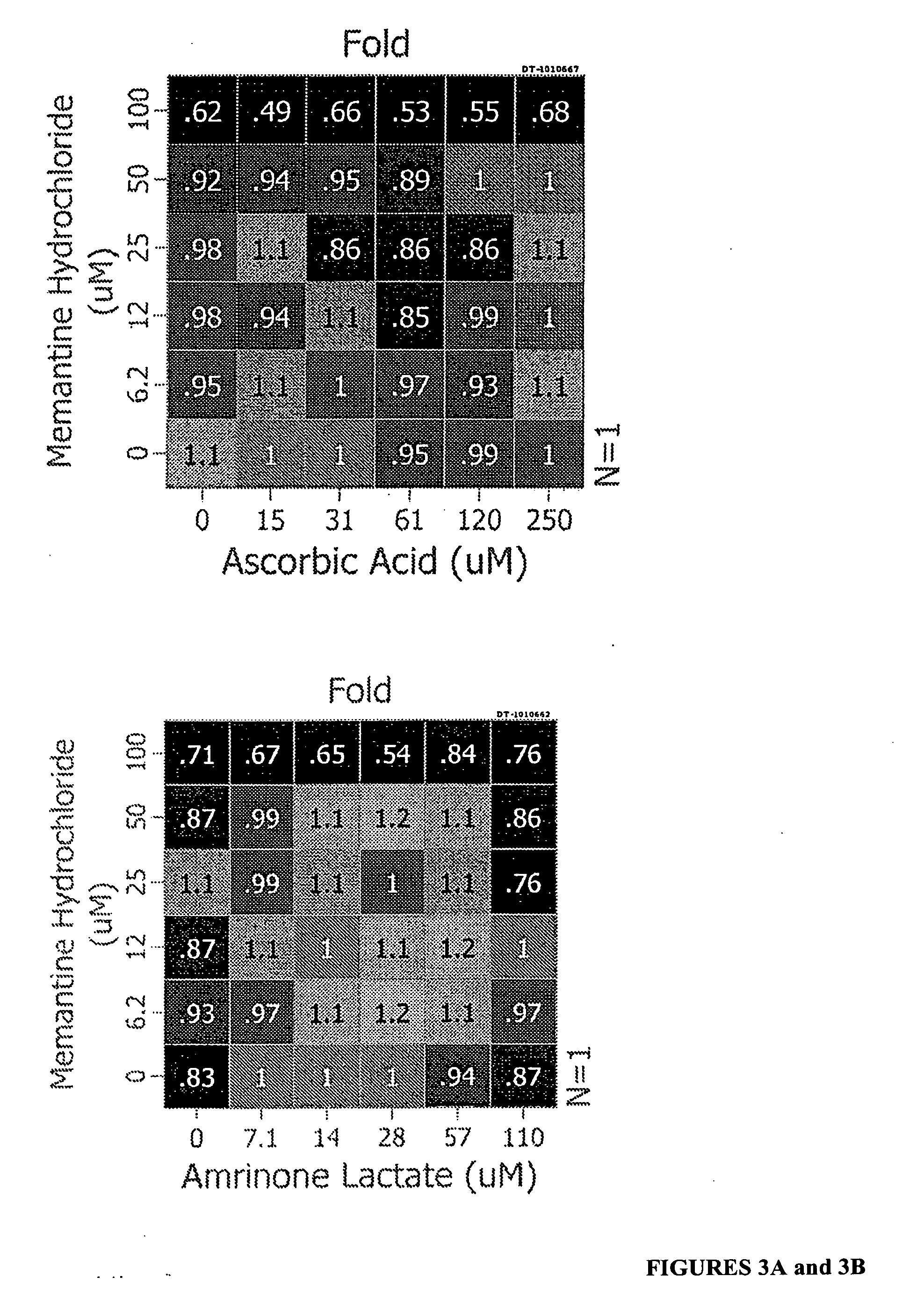Compositions and methods for the treatment of neurodegenerative diseases
a neurodegenerative disease and composition technology, applied in the field of neurodegenerative diseases, can solve the problems of reducing the effect reducing the amount of smn protein in the cell, so as to achieve less toxic, convenient, and greater
- Summary
- Abstract
- Description
- Claims
- Application Information
AI Technical Summary
Benefits of technology
Problems solved by technology
Method used
Image
Examples
example 1
[0051] One method for monitoring SMN protein levels in cells is through use of a cytoblot assay, in which cells are fixed and probed with an antibody against a target protein of interest. We have used a cytoblot assay to determine the concentration of SMN protein in SMA patient fibroblasts, and have identified small molecules that increase SMN protein concentration.
[0052] Using the cytoblot assay, we can clearly distinguish SMN protein levels in patient (GM03813) versus carrier fibroblast cells (GM03814), as shown in the FIGS. 1A and 1B. We performed parallel GAPDH cytoblot assays and verified that the difference in signal does not reflect a difference in cell number (data not shown). Parallel western blots show a similar distinction between the two fibroblast lines, and also demonstrate that the antibody used (from BD Biosciences) is highly specific for SMN protein.
[0053] For comparison with other high-throughput screening (HTS) assays, we have calculated a measure of signal to b...
example 2
[0086] The following combinations were assayed to determine their ability to increase levels of SMN protein in GM03813 fibroblast cells: In certain embodiments, the two agents are ascorbic acid and memantine; ascorbic acid and indoprofen; ascorbic acid and amantadine; ascorbic acid and guanfacine; ubenimex and amantadine; amrinone and memantine; amrinone and amantadine; amrinone and indoprofen; amrinone and guanfacine; guanfacine and memantine; gunafacine and amantadine; alosetron and memantine; alosetron and amantadine; and indoprofen and memantine. The results are shown in FIGS. 2 and 3.
Methods
[0087] Day 1
[0088] Trypsinize confluent GM03813 fibrobast cells (passage 3-10) from Corning T-175 Tissue Culture flasks. Dilute cells to 89,000 cells / ml in MEM. Using multi-drop, add 45 μl / well to white 384-well opaque bottomed tissue culture treated plates. Incubate plates at 37° C., 5% CO2 overnight.
[0089] Using PlateMate, add 60 μl per well to clear 384-well plates; one plate per mas...
PUM
| Property | Measurement | Unit |
|---|---|---|
| molecular defect | aaaaa | aaaaa |
| body weight | aaaaa | aaaaa |
| chemical structure | aaaaa | aaaaa |
Abstract
Description
Claims
Application Information
 Login to View More
Login to View More - R&D
- Intellectual Property
- Life Sciences
- Materials
- Tech Scout
- Unparalleled Data Quality
- Higher Quality Content
- 60% Fewer Hallucinations
Browse by: Latest US Patents, China's latest patents, Technical Efficacy Thesaurus, Application Domain, Technology Topic, Popular Technical Reports.
© 2025 PatSnap. All rights reserved.Legal|Privacy policy|Modern Slavery Act Transparency Statement|Sitemap|About US| Contact US: help@patsnap.com



